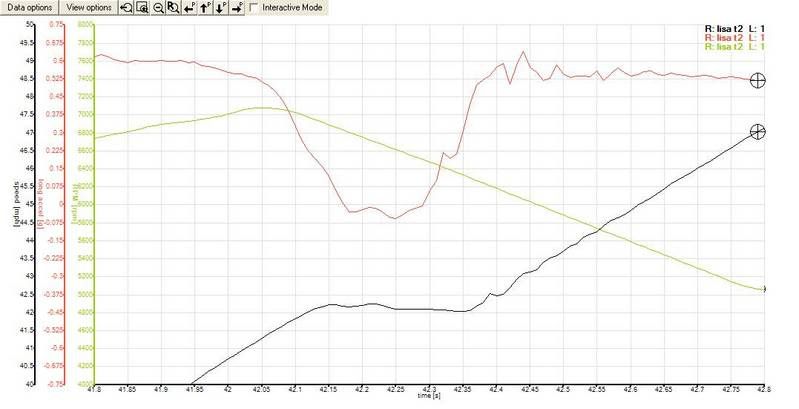|
| Site Partners: | SpotterGuides | Veloce Books |
| Related Sites: | Your Link Here |
|
||||||||||
|
||||||||||
|
|
#1 | ||
|
Veteran
Join Date: Aug 2002
Posts: 1,686
 |
HELP - Gear shift time
One for you data logging guru's out there -
How long does it take to change gear on a normal H pattern dog box? I am measuring it by recording the time between the drop in RPM and when it starts to climb again. Yes I know I should probably be using throttle position but that sensor died a very long time ago. Owing to a number of reasons (mostly driver and a really rubbish gearbox) I am seeing 0.4-0.5 seconds, and that is probably being optimistic. According to the guy selling race sim software he reckoned around 0.2 seconds. Thanks in advance. |
||
|
|

|
|
|
#2 | ||
|
Veteran
Join Date: Feb 2000
Posts: 2,188
 |
0.3 for a 2-3rd gear change, 0.2 for a 3-4th gear change
|
||
|
|
__________________
A Saudi saying, "My father rode a camel. I drive a car. My son flies a jet-plane. His son will ride a camel." 
|
|
|
#3 | ||
|
Veteran
Join Date: Aug 2002
Posts: 1,686
 |
Thanks. That's about what I was measuring on the various data logging demo's.
Coupled with some really bizzare gaps in my cars gearing, I think it's time to investigate an alternative. |
||
|
|

|
|
|
#4 | ||
|
Rookie
Join Date: Jan 2007
Posts: 78
 |
My partner seems pretty slick at gear changes - just over .2 s with a standard synchro H pattern box.
I time gear changes from the point where the speed (black trace) stops increasing to the point where it starts rising again. The tacho signal from the ecu (yellow trace) lags behind by a few tenths. I've also included the longitudinal G (red trace) on the trace as well. 
Last edited by Turby; 16 Jan 2007 at 14:53. |
||
|
|

|
|
|
#5 | ||
|
Veteran
Join Date: Aug 2002
Posts: 1,686
 |
Possibly a dumb question but the RPM curve starts droping BEFORE the speed curve does, and the doesn't start picking up again until AFTER the speed does.
Any idea why? Could it just be that the ECU is 'lying' about the RPM to the data logger? Or does the car continue to accelerate without power? (Possible if going downhill at that point). Based on the way I've been working out gearchange times (start and end of RPM drop) it still produces a very creditable 0.4s. Still better than my dog box! Thanks for the graphs though, interesting. What is the engine by the way? Maximum revs are only 1755, or was it just a short shift for some reason! |
||
|
|

|
|
|
#6 | ||
|
Rookie
Join Date: Jan 2007
Posts: 78
 |
I have just updated the photo to show the correct RPM figures - I hadn't installed the config file for this version of the data logger.
I guess the RPM trace might be a combination of several factors... Firstly the ECU (Motec) probably does some sort of smoothing (moving weighted average ?) - this can be seen by the rise in revs after the gear change taking a while to start climbing. Secondly it might take a fraction of a second to start slowing when no more power is being applied... Maybe someone could enlighten us both  The track was flat - it was on a military airfield in the SW of the UK. Engine wise - its a turbocharged 1700 Ford Puma. |
||
|
|

|
 |
|
|
 Similar Threads
Similar Threads
|
||||
| Thread | Thread Starter | Forum | Replies | Last Post |
| Shift Lights | p38420 | Racing Technology | 6 | 2 Jul 2007 18:05 |
| Omex Sequential Shift light instructions. | DaveStyles | Racing Technology | 3 | 20 May 2005 10:08 |
| Shift that bail | KennyG | Marshals Forum | 5 | 6 Jan 2005 21:52 |
| Electro pneumatic paddle shift system | paddle | Racing Technology | 6 | 30 Oct 2004 17:03 |